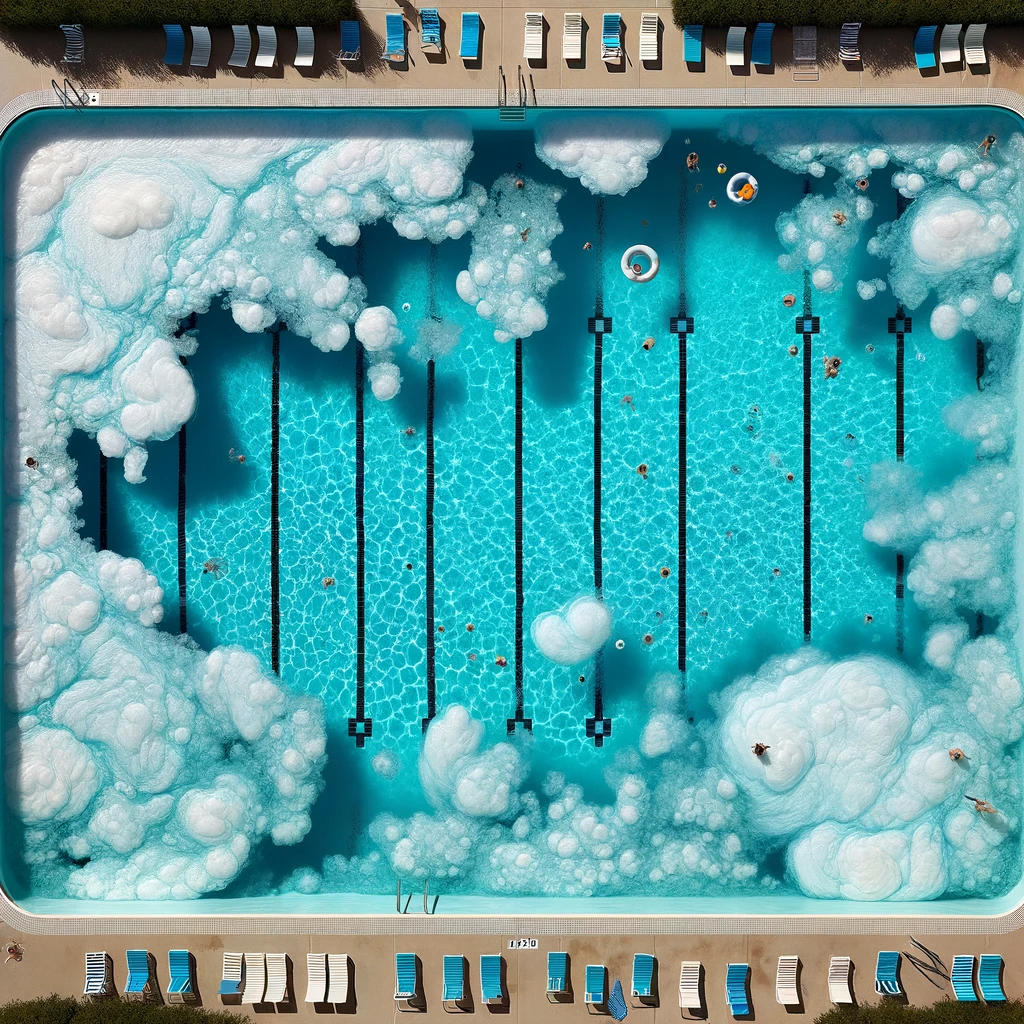During the maintenance of swimming pools, a common issue often arises – the accumulation of a significant amount of flocculent material in the pool that seems resistant to effective cleaning by the filters. This challenge poses difficulties in the cleanliness and maintenance of the pool, urging us to explore more efficient methods of handling it.
Filter Inefficiency for Flocculent Materials
Various special or extremely small flocculent materials in swimming pools might surpass the filtration capabilities of common filters. These materials include:
- Microscopic Particles:
- Some filters may have mesh sizes insufficient to effectively filter out microscopic particles such as fine dust and sand.
- Oils and Chemicals:
- Oils and certain chemicals may form tiny particulates that are challenging for conventional filters to capture.
- Microorganisms:
- Microscopic algae, bacteria, or other microorganisms can create gelatinous or flocculent substances in water, not easily removed by traditional filters.
- Organic Matter:
- Some organic substances, like organic fragments from decomposed plants, can form flocculent material that filters may not entirely eliminate.
- Microscopic Particles of Special Materials:
- Examples include plastic micro-particles, rubber granules, possibly originating from nearby construction materials or the pool surroundings that conventional filters may struggle to capture.
- Residues from Fish and Aquatic Animals:
- If there are fish or other aquatic animals in the pool, their residues, such as scales and feathers, may require a more sophisticated filtration system for effective removal.
- Special Pollutants:
- Certain specific pollutants, like chemical residues and microplastics, may demand specialized filters or treatment equipment.

Possible Methods
1. Flocculant Precipitation and Vacuum Cleaning
Principle: By stopping the circulation of filtration equipment and adding flocculants to the pool water, suspended particles form flocs. These flocs then settle at the pool bottom during still water conditions, creating a compact sediment layer, which is eventually vacuumed out using an underwater vacuum cleaner.
Applicability: Traditional approach suitable for various types of swimming pools.
Operational Advice: Precise control of pool water chemical conditions is necessary, preferably managed by an experienced water quality administrator. Disruption of pool accessibility during the process and the need for skilled vacuuming may be drawbacks.
2. Clarifier-assisted Contact Filtration
Principle: Under normal operation of circulation filtration equipment, clarify and flocculant agents are added to the water. These agents facilitate contact filtration on the filter media, improving water clarity through multiple cycles.
Applicability: Suitable for swimming pools equipped with circulation filtration equipment.
Operational Advice: Convenient and straightforward to use, this is a relatively recent and emerging treatment method. Correct usage of clarifying agents is essential to prevent unintended consequences on water quality. Consideration of higher costs is necessary within the budget constraints.
Conclusion:
In conclusion, the issue of flocculent materials in swimming pools is a complex matter that requires comprehensive consideration. While filters play a crucial role in maintaining water quality, additional attention and treatment methods are needed for certain microscopic or special flocculent materials. Efforts such as regular pool cleaning, enhanced filtration systems, and increased awareness of swimmers’ hygiene contribute to addressing this multifaceted challenge.
